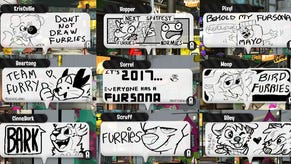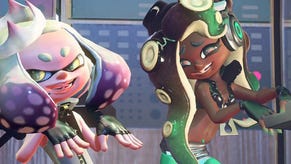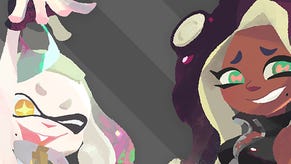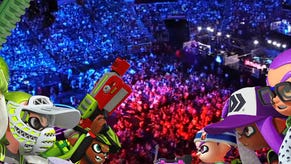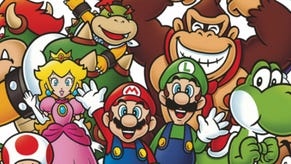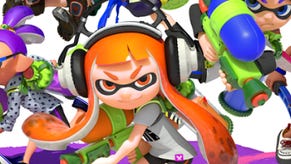Splatoon Wii U Review: New Squids On The Block
Nintendo focuses on online play with its reinvention of the arena shooter.
This article first appeared on USgamer, a partner publication of VG247. Some content, such as this article, has been migrated to VG247 for posterity after USgamer's closure - but it has not been edited or further vetted by the VG247 team.
Leave it to Nintendo to rethink the shooter.
Splatoon is an original title from the house that Mario built, a third-person shooter based around ink. Ink in bold, bright colors; every level and battlefield is an explosion of liquid crayons, like leaving two small children in a room with a microwave and a box of Crayolas. Frequently, those colors are dueling, with opposite shades fighting one another for dominance. Those bright colors are a part of Splatoon's charm, which is equal parts Mario Galaxy, Unreal Tournament, Space Channel 5, and Shibuya fashion.
That fashion is worn by the Inklings, the cute inhabitants of Inkopolis. The game places you in the shoes of one Inkling, allowing you to choose your gender, skin tone, and eye color. They are human-ish, but each Inkling also has the ability to turn into a squid-like form and become one with the ink.
Ink is everything in Splatoon. You shoot ink from the various weapons available. Once your ink has covered a surface, you can dive into it like water, allowing your Inkling to hide or move around much faster. Your ink has a limited supply, as indicated by the canister on your back. To refill it, just go swimming in your own ink for a bit. Running into your opponent's ink pulls you out of squid mode, slows you down, and hurts you. The overall thrust is you want your ink everywhere, not the other guy's.
The full loop of the ink mechanic is the highlight of Splatoon. It just makes sense. There's a flow between attacking, movement, and defense. You'll push forward, laying a path of ink ahead, jumping into that ink occasionally to move faster. Veteran players have this shoot, dive, jump, shoot, dive, jump rhythm to their movements that's really unlike anything I've seen in other games. Used too much ink or under fire? Drop back into your ink trail for a breather or refill. Breaking an enemy's ink trail is also a good way to box them in or cut them off from their team. The ink is offense and defense, weapon and ammunition. It's everything in Splatoon.
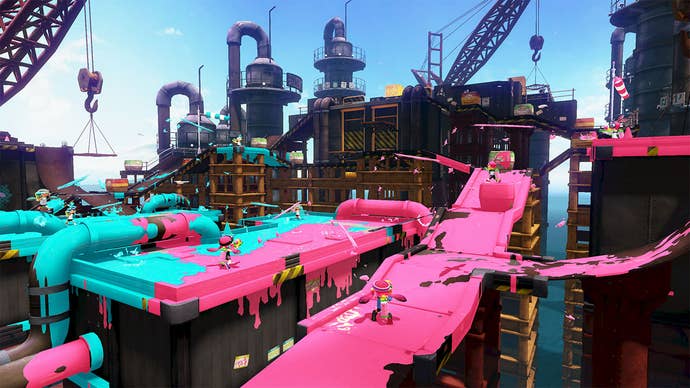
Pen Pals
In an interesting move for Nintendo, Splatoon is primarily multiplayer. There's a single-player mode in the game, but online multiplayer is the intended highlight. The game always starts off with Inkopolis personalities Callie and Marie updating you on the current maps for Turf War (online multiplayer) and Ranked Battles, before you're dropped into the game's plaza. The Plaza is the online lobby where players can lounge around, join battles, buy new weapons and equipment, participate in couch multiplayer, access Amiibo features, or tackle that single-player campaign.
When you first boot up Splatoon, you can't do everything. The game has experience levels (1-20) and you can't even buy any weapons or clothing until you're at least level four, when the game's shopkeepers decide that you're "fresh" enough. That means every player is thrown immediately in the 4v4 Turf War. That's the basic online multiplayer mode, where two teams start on opposite sides of the level and attempt to cover the level's surface with their ink color. Matches are relatively quick - 3 minutes in total - so it's generally a scramble to paint everything you see that's not already your color. (Walls don't count towards your total, but you'll need to paint them to get around each level.)
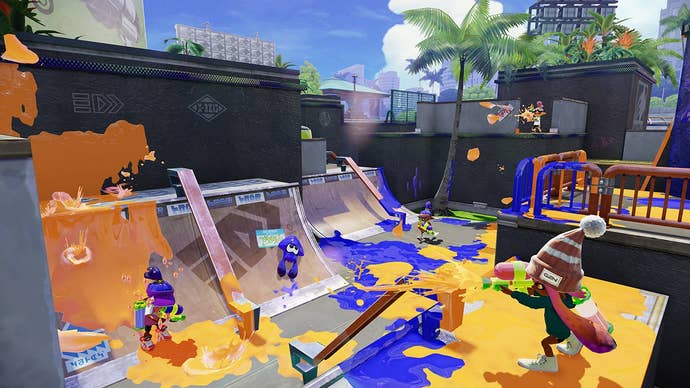
As the central pillar of Splatoon, Turf War is fun. You can directly target foes, but those kills don't count towards your win. The only thing that matters is how much surface you cover, reinforcing the focus on the team instead of an individual player. That focus is helped by the ability to jump to the location of another player, allowing you to help a teammate out and get back in the action. Splatoon feels lighter than other shooters, as if you're carrying less weight on your shoulders. It might also help that there's no voice chat; yes, this prevents hard coordination, but that lack of coordination plus the short match length means you're not emotionally tied to any one match. It's less stressful to lose in Splatoon. In fact, the most stressful moment is after the match, right before the chubby cat referee tells you who won.
With your starting equipment, Turf War is enjoyable, but it can feel repetitive and like a bit of a slog. Having only two maps (out of five) to work with (they switch out every few hours) and the fact that you can't change loadouts between matches without backing out puts a slight damper on the experience. Getting to your first milestone, level 4, allows you purchase new weapons and clothing at the Booyah Base, a series of shops in the Plaza. This is when customization becomes available and the game opens up.
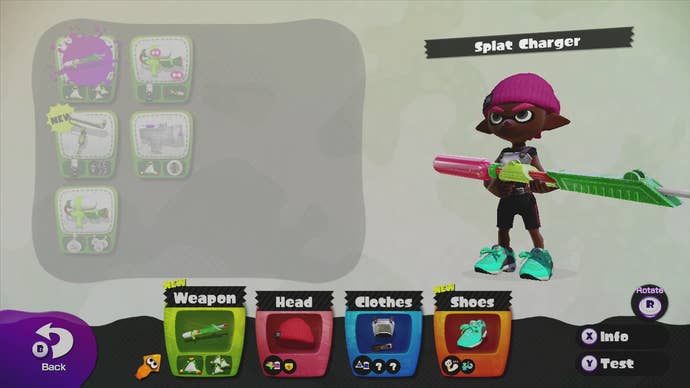
Your starting weapon is the Splattershot Jr, a semi-automatic ink gun with average damage and so-so accuracy. The Splat Roller covers a wide area with ink as you move, but its attacks are primarily melee range. The Splat Charger is your sniper rifle; the longer you charge it, the farther it shoots. The .52 Gal has a slower firing rate, but does more damage.
Each individual weapon also has a different sub-weapon and special weapon directly attached to it, so you'll want to unlock more weapons in Turf War to have further sub-weapon and special options. Sub-weapons are usually different types of bombs, like you basic fire-and-forget versions or the suction grenade, which draws players in before exploding. They draw on a large amount of ink at once, unlike your main weapon. Then there are your special weapons, which can be activated after you've charged the special bar by spreading your ink around. These moves tend to spread a lot of ink or clear an area of opposition, like the orbital Inkstrike or the paint cyclone-shooting Inkzooka.
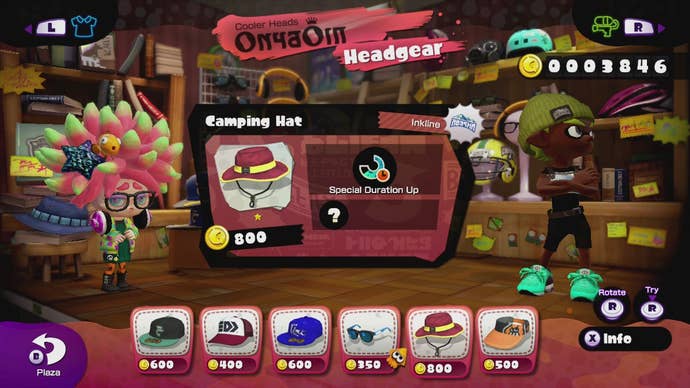
I flip-flopped between the Splat Charger and .52 Gal (or later versions of the same weapons) for most of my playtime. The Splat Charger is definitely the more defensive of the two; with it equipped I take to the high ground and pick off enemies who stray into my team's territory. The .52 Gal is my offensive weapon, pushing forward and dropping loads of paint. Later versions of the basic weapon types are locked behind level gates and higher prices, but you'll find one weapon that you can call your own before level 10.
Then there's clothing, which breaks down into headwear, shirts, and shoes. Each clothing item imparts an additional gameplay benefit, like lowering the ink cost of your weapons, increasing your run speed, or causing you to respawn faster. Higher levels of gear have multiple effects, with each additional effect after the first one unlocking randomly via experience. Example: You'll have headband that increases your swim speed, but its next random effect unlocks after you equip it and gain 1000 experience points.
Honestly, I liked Splatoon's multiplayer the first time I saw it at E3 last year. There's just nothing else like it out there. What's available at launch for online multiplayer is not enough to binge on, but it's good for a few matches here and there. Nintendo is offering a barebones rollout here, ostensibly to let players get acclimated to the game first. The company has already said that Splat Zones, the first available Ranked Battles, will be unlocked once a certain number of players worldwide reach level 10. If you've played the Global Testfire weekends, you know what to expect in the multiplayer already. It's more of that.
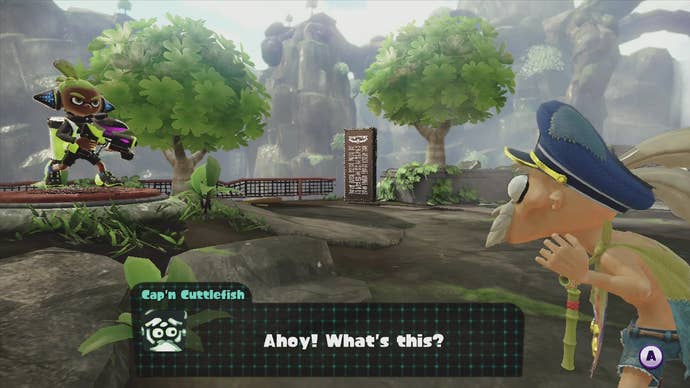
This is My Spot
What was really surprised me is how much more I enjoyed the single-player campaign compared to the multiplayer. Single-player is mostly separate from the multiplayer; multiplayer clothes and weapons don't transfer over. If you head down a drain pipe from the Plaza, you'll meet Cap'n Cuttlefish, an old man who will task you with retrieving the Grand Zapfish, a living power source that's been taken by a UFO.
Splatoon's single-player is a puzzle game. You need to get your Inkling from point A to point B without dying more than three times. Each level has various checkpoints and a few power-ups to help you out, but otherwise, it's a matter of figuring out how to use your basic abilities to find a way through. You're opposed by the Octarians, octopus soldiers who will try to use their own ink to slow you down. Some just shoot, others hide behind shields. Some will call down Inkstrikes, while others suck up your ink.
There are other new mechanics that get thrown into the single-player. Invisible platforms that can only be seen when you paint them. Sponge platforms that swell to giant-size as they absorb your ink and shrink when they taste Octarian ink. Together, the level designs, your basic abilities, these new mechanics, and the Octarians in your way combine to make my favorite puzzle-platformer in recent memory. It'll even test your reflexes a bit! The ink gameplay that forms the backbone of Splatoon offers so much more in single-player than the basic Turf Wars.
You'll paint and swim your way through nearly 30 levels and 5 boss fights, the latter of which are easily as good and memorable as the encounters in other Nintendo offerings. Finding my way up to new platforms, squeezing through to the next area, making those tense leaps into open air; Splatoon single-player is great. It's my personal highlight when it comes to Splatoon and I didn't expect that. Bravo, Nintendo. And hey, if you want to expand this sooner rather than later, I'm down.
Get Ready to Dye
Splatoon's entire inking system is so simple and elegant that it makes you wonder why no one else did it before. Got a family? This is one of the few shooters I can say is for everyone. Multiplayer is so light and comfortable that I think anyone could have a blast with it. In fact, I'd probably put it up against Super Smash Bros as a party game if the couch multiplayer allowed up to four players (it's 1v1 only). Once you get beyond multiplayer, you'll find a great little puzzle-platformer that I hope Nintendo does more with in the future. "Future" being the key because the available multiplayer needs a more content. Splatoon is pretty great already and it'll probably be a class act when Nintendo is done with it, but we're not quite there yet. For now, we have this risky, odd little game that I expect will find some lifelong fans.
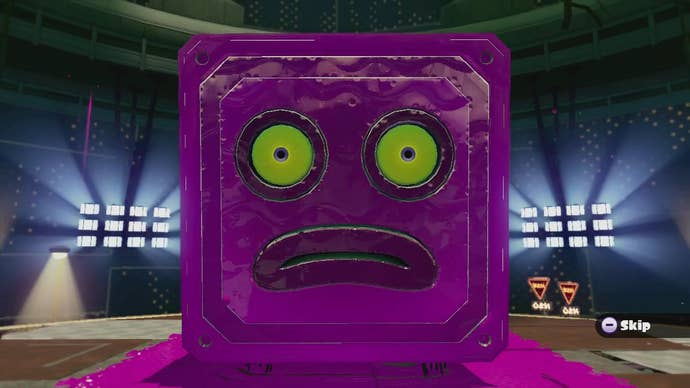
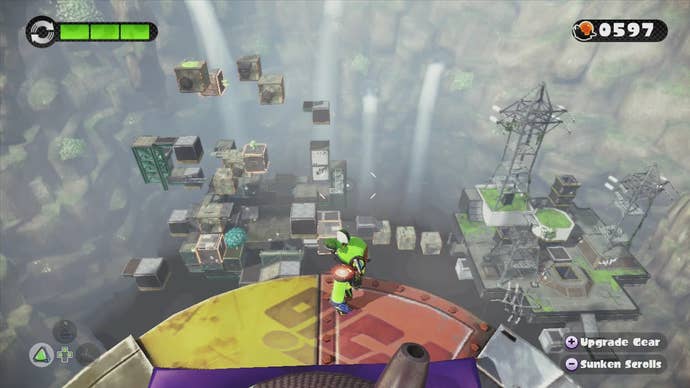
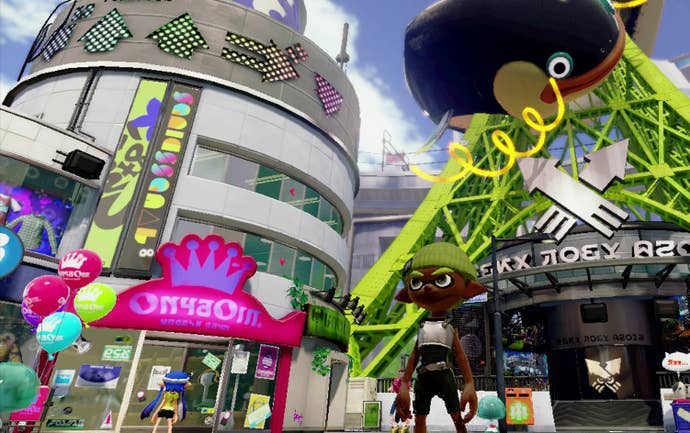

Lasting AppealOnce you're done with the single player campaign, there's hours and hours of online multiplayer and Amiibo challenge maps.
SoundWhat genre of music is this? Mod? I don't even know.
VisualsSplatoon has a simply style, but the colors pop and the game has a hefty dose of character
ConclusionNintendo takes a chance with this odd, risky rethink of the arena shooter. Splatoon moves away from guns and grit, offering a shooter anyone of any age can enjoy. The game's single-player is an absolutely amazing puzzle platformer that deserves some expansion. Multiplayer is a bit light on content at launch, but Nintendo is already promising more this summer.


